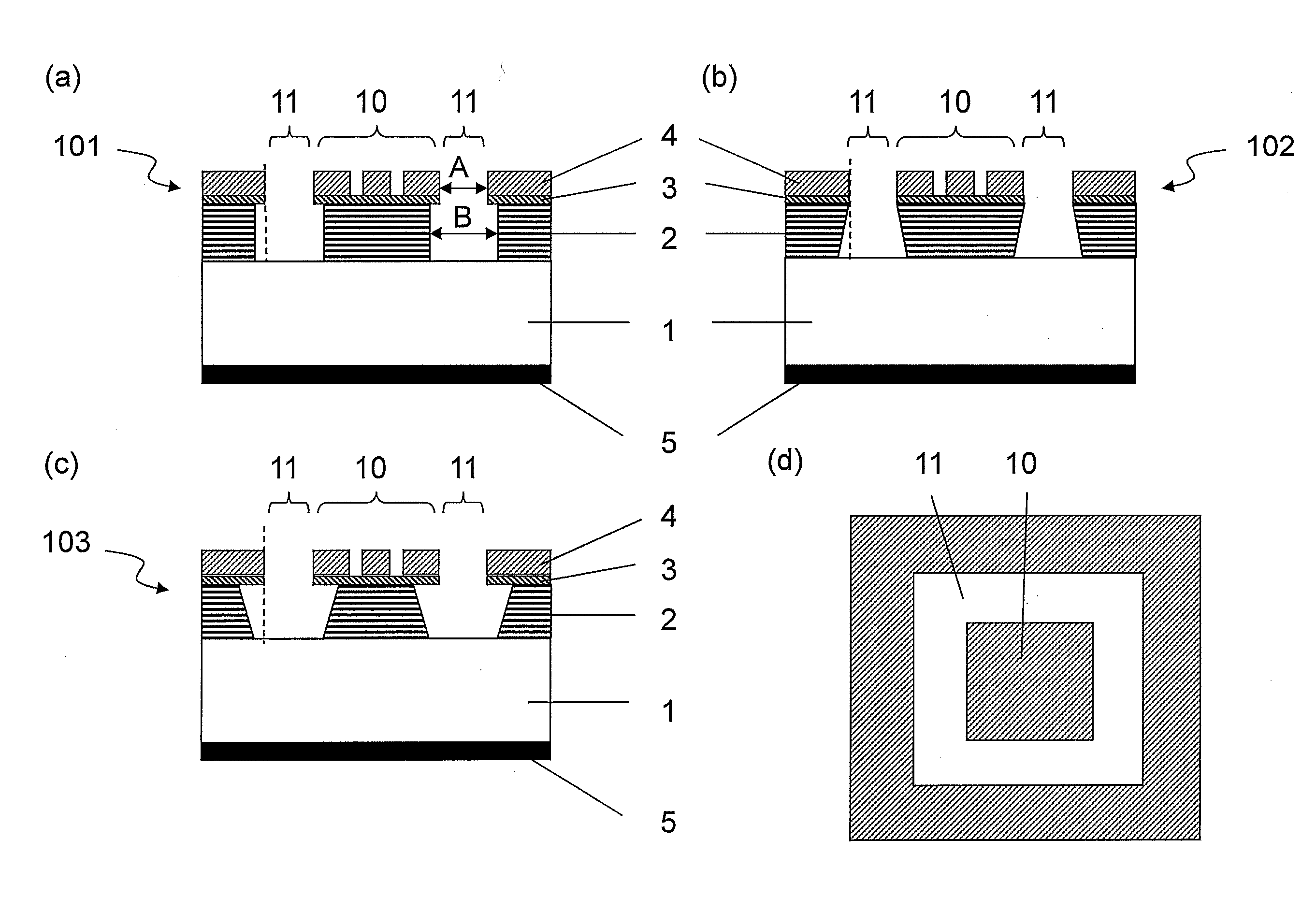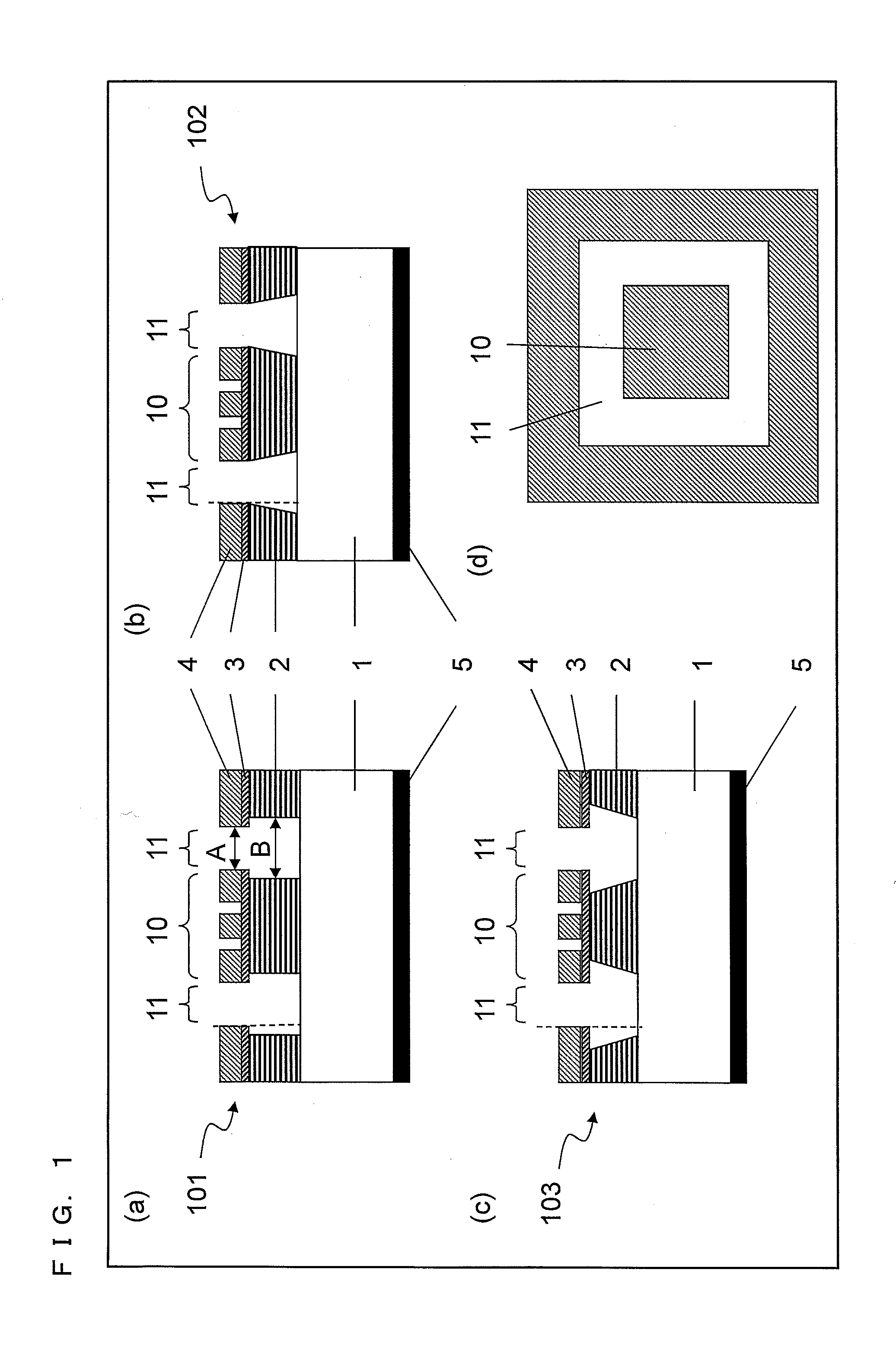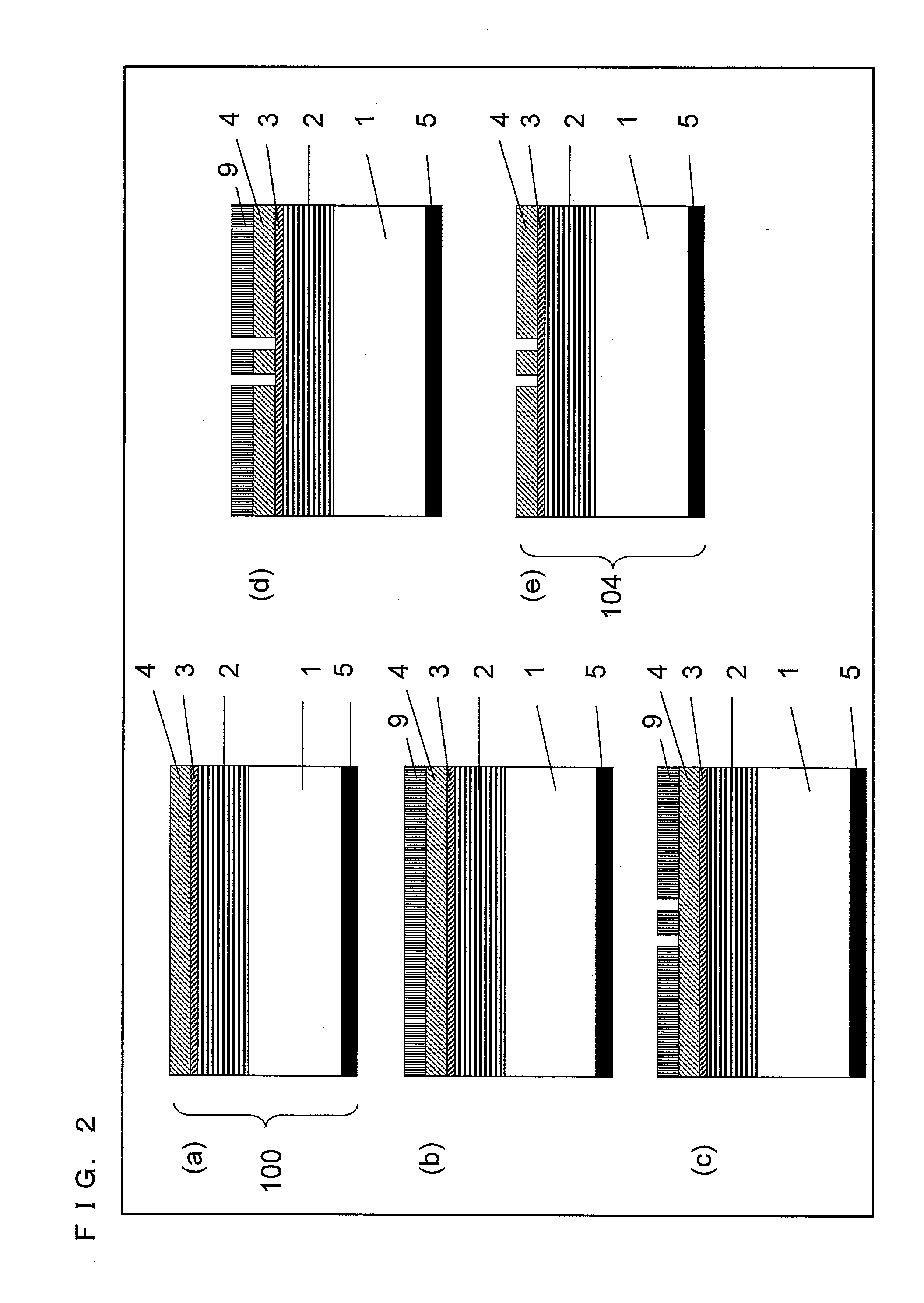Reflective mask and method for manufacturing same
- Summary
- Abstract
- Description
- Claims
- Application Information
AI Technical Summary
Benefits of technology
Problems solved by technology
Method used
Image
Examples
first embodiment
[0050]In the following, a first embodiment of the present invention will be described with reference to the drawings.
[0051]First, the configuration of reflective masks of the present invention will be described. In FIG. 1, (a), (b), and (c) are outline cross sectional views of structures of the reflective masks of the present invention, and (d) of FIG. 1 is an outline plan (a), (b), and (c) of FIG. 1 viewed from above. Thus the configuration of a reflective mask of the present embodiment may be any of 101, 102, and 103.
[0052]In reflective masks 101, 102, and 103 shown in (a), (b), and (c) of FIG. 1, a multilayered reflective layer 2, a protective layer 3, and an absorption layer 4 are sequentially formed on a surface of a substrate 1. The structure is such that a conductive film 5 is formed on the reverse surface of the substrate. A buffer layer may be included between the protective layer 3 and the absorption layer 4. The buffer layer is a layer provided for not damaging the protec...
example 1-1
[0069]In the following, a first Example of the method for manufacturing the reflective mask of the present embodiment will be described. First, a reflective mask blank 100 in (a) of FIG. 2 was prepared. The reflective mask blank 100 was formed by sequentially forming, on the substrate 1, the multilayered reflective layer 2 including 40 pairs of Mo and Si and designed such that reflectance against EUV light with a wavelength of 13.5 nm is about 64%, the protective layer 3 of Ru having a thickness of 2.5 nm on the multilayered reflective layer 2, and the absorption layer 4 formed from TaSi having a thickness of 70 nm on the protective layer 3.
[0070]With respect to the reflective mask blank 100, a positive type chemically amplified resist 9 (FEP171: FUJIFILM Electronic Materials) was applied at a film thickness of 300 nm ((b) of FIG. 2), drawing was performed using an electron-beam lithography machine (JBX9000: JEOL Ltd.), post-exposure bake (Post Exposure Bake: PEB) was performed for ...
example 1-2
[0076]A second Example of the method for manufacturing the reflective mask of the present embodiment will be described. The method for forming the main pattern part is a method identical to that of Example 1.
[0077]In the present example, a step was performed to form the light-shielding frame 11 on the pattern area 10 ((a) of FIG. 6) of the reflective mask 104. The i-line resist 29 was applied to the reflective mask 104 with a film thickness of 500 nm ((b) of FIG. 6), and drawing and developing were performed thereon with an i-line drawing machine (ALTA) to form, on the resist portion, a resist pattern having removed therefrom an area that will later be the light-shielding frame 11 ((c) of FIG. 6). The resist pattern had an opening width of 5 mm, and was arranged 3 μm away from the 10 cm×10 cm main pattern area at the central part of the mask.
[0078]Next, the absorption layer was stripped ((d) of FIG. 6) through dry etching with CHF3 plasma (pressure of 15 mTorr, ICP of 300 W, RIE of ...
PUM
 Login to View More
Login to View More Abstract
Description
Claims
Application Information
 Login to View More
Login to View More - R&D
- Intellectual Property
- Life Sciences
- Materials
- Tech Scout
- Unparalleled Data Quality
- Higher Quality Content
- 60% Fewer Hallucinations
Browse by: Latest US Patents, China's latest patents, Technical Efficacy Thesaurus, Application Domain, Technology Topic, Popular Technical Reports.
© 2025 PatSnap. All rights reserved.Legal|Privacy policy|Modern Slavery Act Transparency Statement|Sitemap|About US| Contact US: help@patsnap.com



